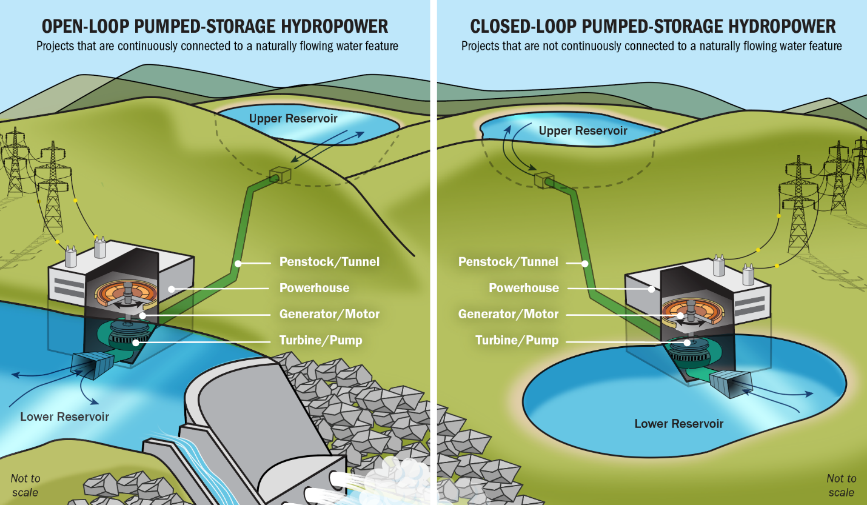Across the United States, 43 pumped storage hydropower (PSH) facilities have the capacity to generate and store 21 gigawatts of renewable energy.
Used in various forms for centuries, PSH comes from the pumping and release of water between two reservoirs at different elevations. And while new PSH hasn't been built on large scale in recent decades, the rapid changes in the power system may create new opportunities to build PSH and for existing PSH to change its operations.
With more and more renewables coming onto the grid, long-term storage like the kind PSH can provide becomes more and more important to keep the grid balanced. But in order to make sure PSH is there to provide this resiliency for our power system, project developers and regulators need information on how PSH impacts the environment. PNNL recently conducted a comparative study to evaluate the environmental effects of building and operating two types of PSH: the traditional open-loop system and a relative newcomer, closed-loop. The PNNL team found that environmental risks of closed-loop PSH systems are generally lower than those of open-loop PSH.







